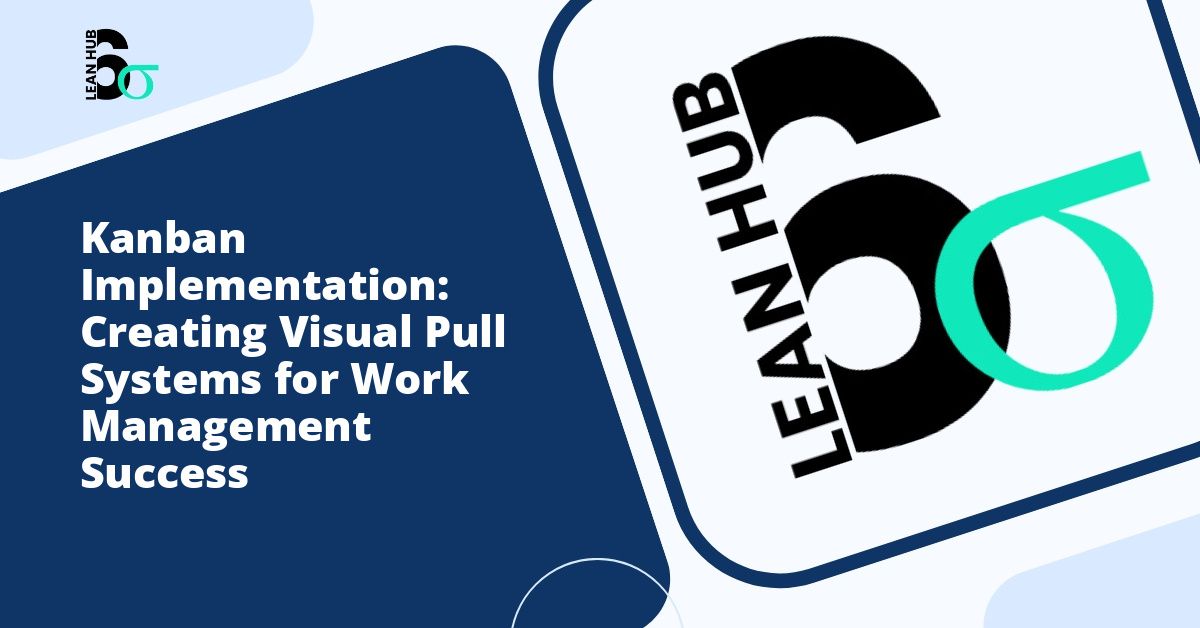In today’s fast-paced business environment, organizations constantly seek methods to improve workflow efficiency and productivity. Kanban, a visual work management system originating from Japanese manufacturing principles, has emerged as a powerful tool for organizations across industries. This methodology enables teams to visualize work, limit work-in-progress, and maximize efficiency through a pull-based system that responds to actual capacity rather than pushing work onto overwhelmed teams.
Understanding Kanban and Its Origins
Kanban, which translates to “visual signal” or “card” in Japanese, was developed by Toyota in the 1940s as part of their just-in-time manufacturing system. The core principle behind Kanban is simple yet revolutionary: work should be pulled into the system based on capacity rather than pushed according to arbitrary schedules. This approach minimizes waste, reduces bottlenecks, and ensures that teams focus on completing tasks before taking on new ones. You might also enjoy reading about Standard Work in Six Sigma: Creating Consistent Processes That Deliver Results.
The visual nature of Kanban boards makes it immediately clear what work is in progress, what has been completed, and what remains in the queue. This transparency creates accountability and facilitates better communication among team members, stakeholders, and management. You might also enjoy reading about How to Conduct a DOE Study: Step-by-Step Guide for Six Sigma Projects.
The Connection Between Kanban and Lean Six Sigma
Kanban operates as a complementary methodology within the broader framework of lean six sigma principles. Organizations implementing lean six sigma methodologies focus on eliminating waste, reducing variation, and continuously improving processes. Kanban serves as a practical tool that brings these abstract concepts into daily operations. You might also enjoy reading about Lean Six Sigma Improve Phase: The Complete Guide for 2025.
Within the lean six sigma framework, practitioners recognize phase improvements through various tools and techniques. Kanban boards provide visual evidence of process improvements, making it easier to identify bottlenecks, measure cycle times, and demonstrate value to stakeholders. When teams combine Kanban with lean six sigma analytics, they create a powerful system that drives both operational excellence and continuous improvement.
Core Principles of Kanban Implementation
Successful Kanban implementation relies on understanding and applying four fundamental principles:
Start With What You Do Now
Unlike methodologies that require complete process overhauls, Kanban begins with your current workflow. This approach reduces resistance to change and allows teams to gradually evolve their processes. By mapping existing workflows onto a Kanban board, teams gain immediate visibility into their current state without disrupting ongoing operations.
Agree to Pursue Incremental, Evolutionary Change
Kanban emphasizes continuous, incremental improvements rather than radical transformations. This principle aligns perfectly with the lean six sigma philosophy of ongoing optimization. Teams regularly review their processes, identify opportunities for improvement, and implement small changes that compound over time into significant gains.
Respect Current Processes, Roles, and Responsibilities
Implementation success depends on acknowledging that existing processes likely contain valuable elements worth preserving. Kanban does not eliminate current job titles or organizational structures. Instead, it provides a framework that helps existing teams work more effectively together.
Encourage Acts of Leadership at All Levels
Kanban empowers every team member to identify improvements and take ownership of their work. This distributed leadership model fosters innovation and engagement while reducing dependency on hierarchical decision-making structures.
Creating Your Visual Pull System
Implementing a Kanban system involves several key steps that transform abstract work into tangible, manageable components:
Visualize Your Workflow
The first step involves creating a visual representation of your work process. A basic Kanban board contains at minimum three columns: To Do, In Progress, and Done. However, most organizations benefit from additional columns that reflect their specific workflow stages. For example, a software development team might include columns for Design, Development, Code Review, Testing, and Deployment.
Each work item appears as a card that moves across the board from left to right, providing instant visibility into project status. The physical or digital board becomes the single source of truth for what work exists, who is working on what, and where potential problems might be emerging.
Limit Work in Progress
One of the most powerful aspects of Kanban is the implementation of Work-in-Progress (WIP) limits. These limits cap the number of items allowed in each column at any given time. When a column reaches its limit, the team must complete existing work before pulling in new tasks.
WIP limits prevent team members from multitasking excessively, reduce context switching, and help identify bottlenecks in the workflow. When properly implemented, these constraints drive conversations about process improvements and resource allocation.
Manage Flow
Once work is visualized and WIP limits are established, teams focus on managing the flow of work through the system. This involves monitoring how quickly items move from start to finish, identifying where work tends to accumulate, and addressing impediments that slow progress.
Metrics such as cycle time (how long items take to complete) and throughput (how many items complete within a given period) provide objective measures of process efficiency. These metrics help teams recognize phase improvements and demonstrate value to stakeholders.
Make Process Policies Explicit
For Kanban to function effectively, teams must clearly define and document their working agreements. These policies include definitions of what qualifies a task as complete, criteria for pulling work from one column to the next, and procedures for handling urgent items or blockers.
Explicit policies eliminate ambiguity and ensure consistency in how work moves through the system. They also provide a baseline against which teams can measure proposed improvements.
Implementing Kanban: Practical Considerations
Choosing Between Physical and Digital Boards
Organizations must decide whether to use physical boards with cards and sticky notes or digital solutions. Physical boards excel in co-located environments where teams gather around a shared space. They provide tactile engagement and high visibility without requiring technology access.
Digital Kanban tools offer advantages for distributed teams, integration with other software systems, and automated metrics tracking. Many organizations successfully use both approaches, maintaining physical boards for team areas while using digital systems for broader organizational visibility and remote access.
Starting Small and Scaling Gradually
Successful Kanban implementation typically begins with a pilot team or single process. This approach allows organizations to learn, adapt, and demonstrate value before expanding to additional areas. Early wins build momentum and provide concrete examples that help other teams understand Kanban benefits.
As comfort with the methodology grows, organizations can extend Kanban to portfolio management, strategic initiatives, and cross-functional workflows, creating alignment from individual tasks to organizational objectives.
Common Implementation Challenges
Teams implementing Kanban often encounter predictable obstacles. Resistance to WIP limits represents one common challenge, as individuals accustomed to juggling multiple tasks simultaneously may initially view constraints as restrictive rather than enabling.
Another frequent issue involves creating boards that are either too simple to provide useful information or too complex to maintain. Finding the right level of granularity requires experimentation and adjustment based on team feedback.
Measuring Success and Continuous Improvement
Kanban implementation should be measured through both quantitative and qualitative indicators. Quantitative metrics include cycle time reduction, increased throughput, and improved predictability in delivery dates. Qualitative measures encompass team satisfaction, reduced stress levels, and improved collaboration.
Regular retrospectives allow teams to reflect on their Kanban practices and identify improvement opportunities. These sessions should examine not just what work was completed but how the system itself can evolve to better serve team needs.
Conclusion
Kanban provides organizations with a practical, adaptable approach to work management that emphasizes visualization, flow, and continuous improvement. By implementing visual pull systems, teams gain transparency into their workflows, reduce waste, and deliver value more consistently. When combined with lean six sigma principles, Kanban becomes even more powerful, enabling organizations to recognize phase improvements and systematically optimize their processes. Whether starting with a single team or implementing organization-wide, Kanban offers a proven path toward greater efficiency, better collaboration, and sustainable productivity improvements.








